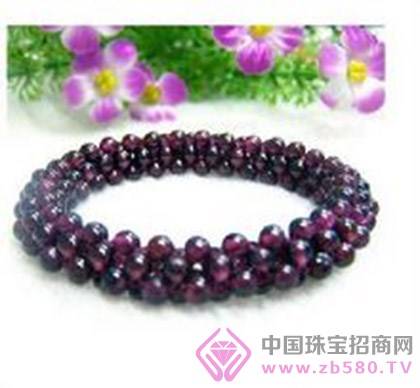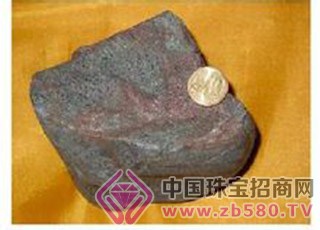At the 2003 International Emerald Conference, three newly confirmed ultra-high pressure terranes in western China, together with two existing ultra-high pressure terranes in the Dabieshan and Sulu in eastern China, were included in the global academic community by 22 typical models. Among the ultra-high pressure terranes. In 2003, the rock and calcareous silicates contained a large number of eclogite lenses containing coesite.
In 2002, micro-diamonds were found in the eclogites and gneiss zircons of the Qinling Group in the northern Qinling Mountains, and a new Early Paleozoic UHP metamorphic belt was identified in central China.

In 2001, before the groundbreaking ceremony of the Chinese mainland scientific drilling project, Rainbow Company specially cooperated with the experts of Nanjing Art College to design a handicraft with eclogite as the base and crystal globe as the main body.
In 1999, he summarized and commented on the progress of the study on the Sulu UHP metamorphic belt in the Dabie Mountains. The five focus issues that were controversial in the previous research process were whether the eclogite was “in situ†or “foreignâ€.
Since 1999, a large number of detailed investigations have been carried out in the Maobei area to reveal in detail the occurrence and location of the coesite eclogite block. Through the observation of the combined characteristics of the rocks in the mafic-ultramafic zone, and supporting the opinions of Li Shuguang et al. and Jahn et al. in 1998, there are two types of mafic-ultramafic rocks, one of which is deformed. The combination of Fanghui peridotite and pure peridotite is closely related to the morphology, fabric and geometric relationship of the ultrahigh pressure-high pressure eclogite, and the other is the combination of pyroxenite, hornblende and gabbro. For young invaders, controlled by faults, there is a clear contact relationship with surrounding rock intrusion, magma organization and Jahn equal to 1998 chronological evidence.
After the discovery of eclogites in the northern margin of Qaidam in 1998, typical eclogites were also found in another site during field work in 1998, and were determined to contain coesite eclogites by laboratory studies.
In 1998, the researchers found dozens of eclogite outcrops in the east of Qingshan Mountain and Mozitan in the northern Dabie Mountains, and the rutile, apatite and monoclinic pyroxene in the eclogite garnet were dissolved. It indicates that the formation of eclogite in the ultrahigh pressure zone in the northern Dabie Mountains is related to subduction and collision, and has experienced ultrahigh pressure metamorphism.
In 1996, Scaillet further studied the polysilicon muscovite in the eclogite of DoraMaira, and studied the migration range, migration mechanism and source of excess argon.
In 1995, the International Emerald Rock Live Academic Conference was held in Dabie Mountain, China. In 1995, the International Emerald Rock Field Conference was held in Dabie Mountain.
At the beginning of 1994, Wang Runsan reported on the discovery of granulite (the same location as the eclogite above) in Kumish at the National 305 Project Working Conference.
In 1994, the French scholar Cab was the first to discover coesite and its artifacts in the Precambrian eclogitic metamorphic sedimentary rocks and impure marbles in the western African continent.
In 1990, high temperature and high pressure minerals such as coesite and diamond were found in the eclogites of the Dabieshan Group in Anhui Province, China.
In 1989, Professor Xu Shutong of the Anhui Bureau of Geology and Minerals discovered the diamond inclusions in the eclogites of the new store in Qianshan County, indicating that the Dabie UHP metamorphic belt once sank to a depth of about 160 kilometers underground.
After the discovery of the coesite eclogite belt in 1989, in 1990 and 1991, the first time in the uranium, Su, and Luke quartz eclogites, the micro-diamond and slow-source gold were found.
Since 1989, the Huazhong high-pressure metamorphic belt has been found to contain coesite and diamond eclogites, which has attracted the attention of scholars at home and abroad, and has obtained important research results, but there are great differences in geochemistry and chronology research.
Since the discovery of Ke Quartz in the eclogites of the Dabie Mountains in China in 1989, the Dabieshan UHP metamorphic belt has become a hot spot in the current orogenic belt research and has made many important advances.
In 1989, Professor Xu Shutong of the Anhui Bureau of Geology and Minerals discovered the diamond inclusions in the eclogites of the Xindian County, which indicated that the Dabie UHP metamorphic belt once sank to the ground about 160km.
Since 1988, a new geological theory and mapping method have been used in the Jiaodong area to carry out 1:20 million regional geological surveys and Ludong eclogite special studies, and some new understandings and progress have been made.
In 1987, Dr. Xu Zhiqin, who was studying in France, returned to China to collect papers. A special mineral, Coza Quartz, was found in an eclogite outcrop in the southern part of Yuexi County, Dabie Mountain.
In 1987, an academician of the famous geology scientist Xu Zhiqin discovered Coza quartz in the outcrop of Yuexi eclogite in the west of Tianzhu Mountain. It was the third discovery in the world and was first discovered in Asia and China.
Since 1987, there have been many international conferences on eclogite or high-pressure metamorphic rocks.
In 1987, Dr. Xu Zhiqin (now a Chinese scientific drilling project n), who is studying in France, returned to China to collect papers. A special mineral, cozaite, was found in an eclogite outcrop in the southern part of Yuexi County, Dabie Mountain. It is formed under the ultra-high pressure metamorphism of tens of thousands of bars, usually at a depth of 80 km.
In 1984, for the first time, Smith discovered the presence of coesite or its illusion in the form of inclusions in the eclogites of the Caledonian orogenic belt in Norway. In the past two years, there have been many reports in this area.

In September 1983, the American Geological Society held an international blue schist and related eclogite research seminar in Bellingham and Seattle, Washington.
In 1981, Gill [Chuan believed that most of the volcanic arc calc-alkaline basalt-Anshan-Yi'an rock first-class porphyry could not be formed by the subduction of MORB in the eclogite phase, but may be released by the subduction oceanic crust. The ground slow wedge is formed by melting.
In the 1980s, the eclogite containing ke quartz and micro-diamond was the ultimate symbol of the UHP metamorphic belt. Dabie Mountain has become the focus of geological circles at home and abroad, and has become one of the most famous orogenic belts in the world. The hotline of professional tourism in the geological community.
In 1979, in East Kimberley, Australia, I found the world's highest grade and largest reserves of Algeria sylvestre potassium and magnesium porphyry, and also in the world of Fanghui peridotite, pure olivine, alkaline ultrabasic rock, alkali Diamonds were found in porphyrites and eclogites in plaques and gneiss, indicating that diamonds are not exclusive to kimberlite.
In 1958, geological scientists discovered 2-3 corundum producing areas in the eclogite.
After the discovery of diamonds in the eclogite traps of the Kimberlite in 1889, some geologists have always believed that diamonds are trapped.
In 1399, Bownet discovered diamonds in the kimberlite octopus-eclogite. The eclogites have obvious similarities with vermiculite and contain diamonds; this inclusion, tuberculosis or trapping body Ultrabasic rocks with distinct consistency in their composition around the world.
Nylon Jacket,Men'S Jacket,Outdoor Casual Jacket,Waterproof Jacket
SHAOXING YUBO IMP AND EXP CO LTD. , https://www.yubogarments.com
